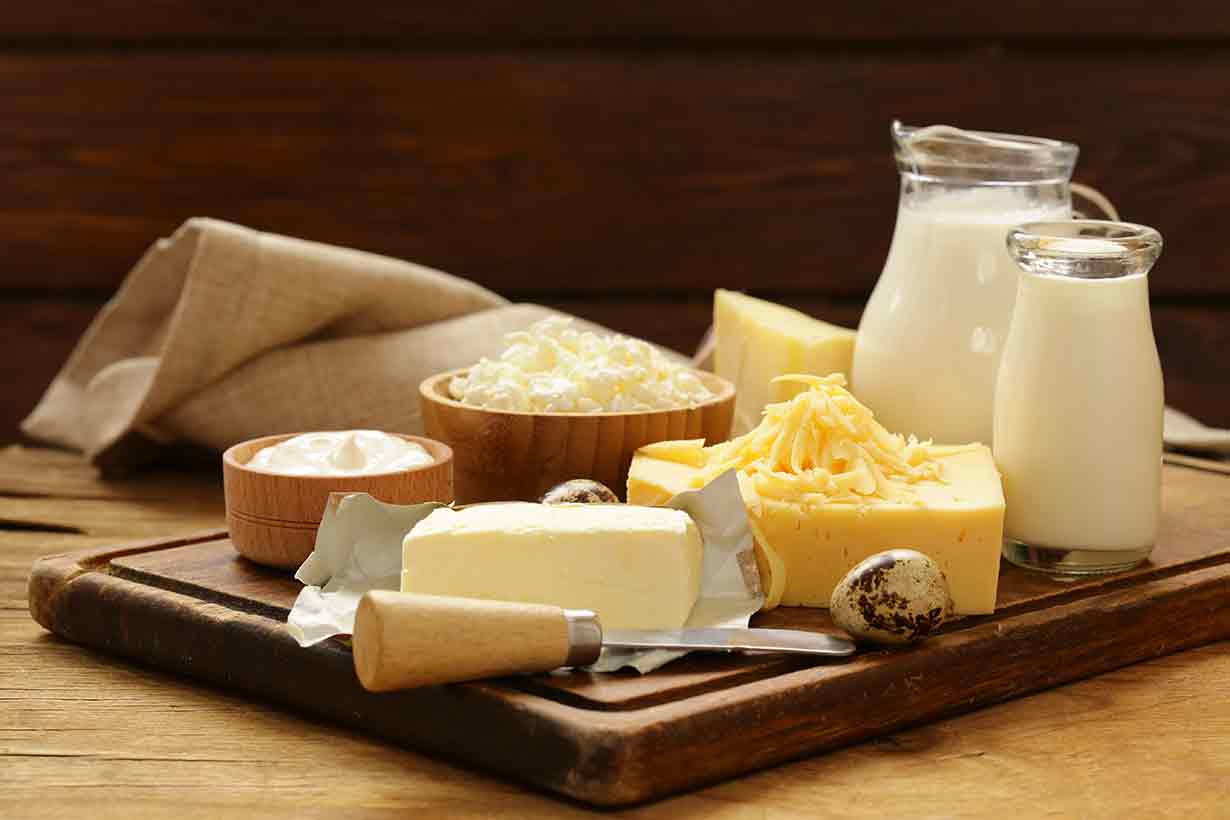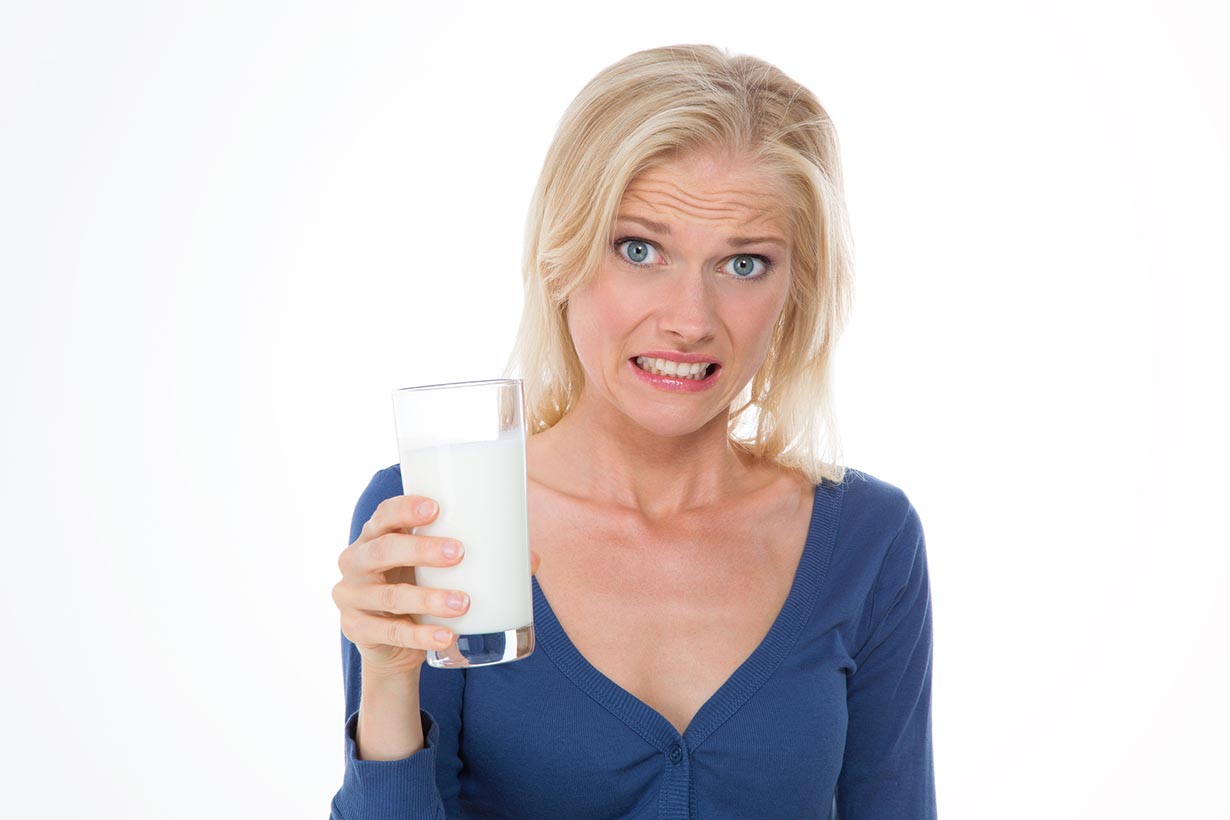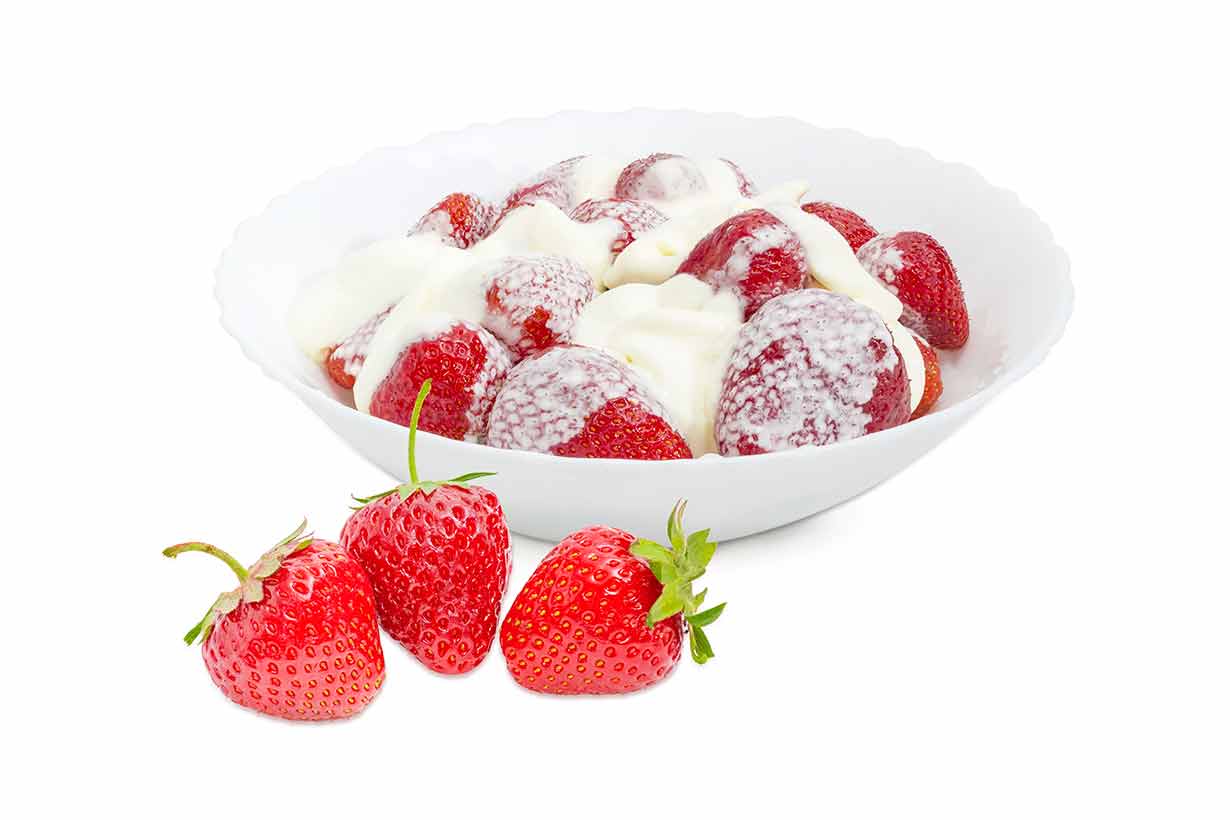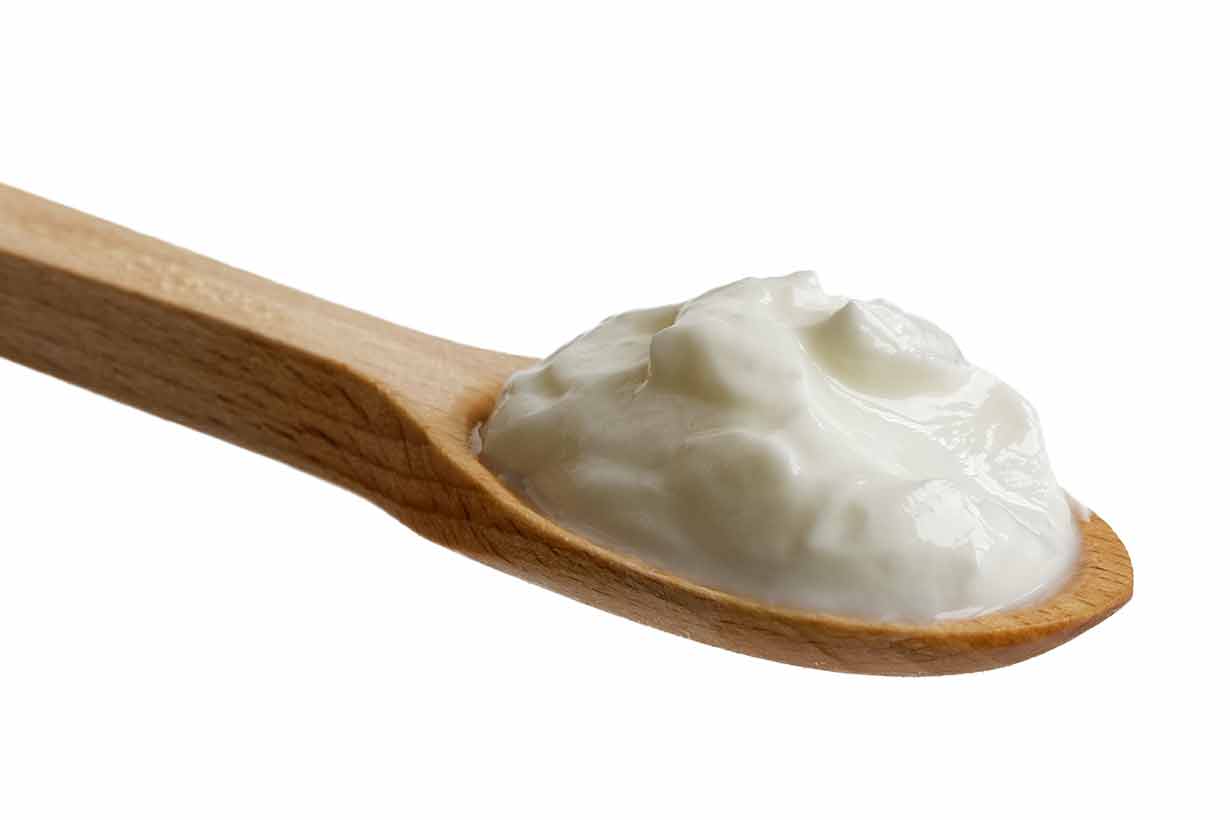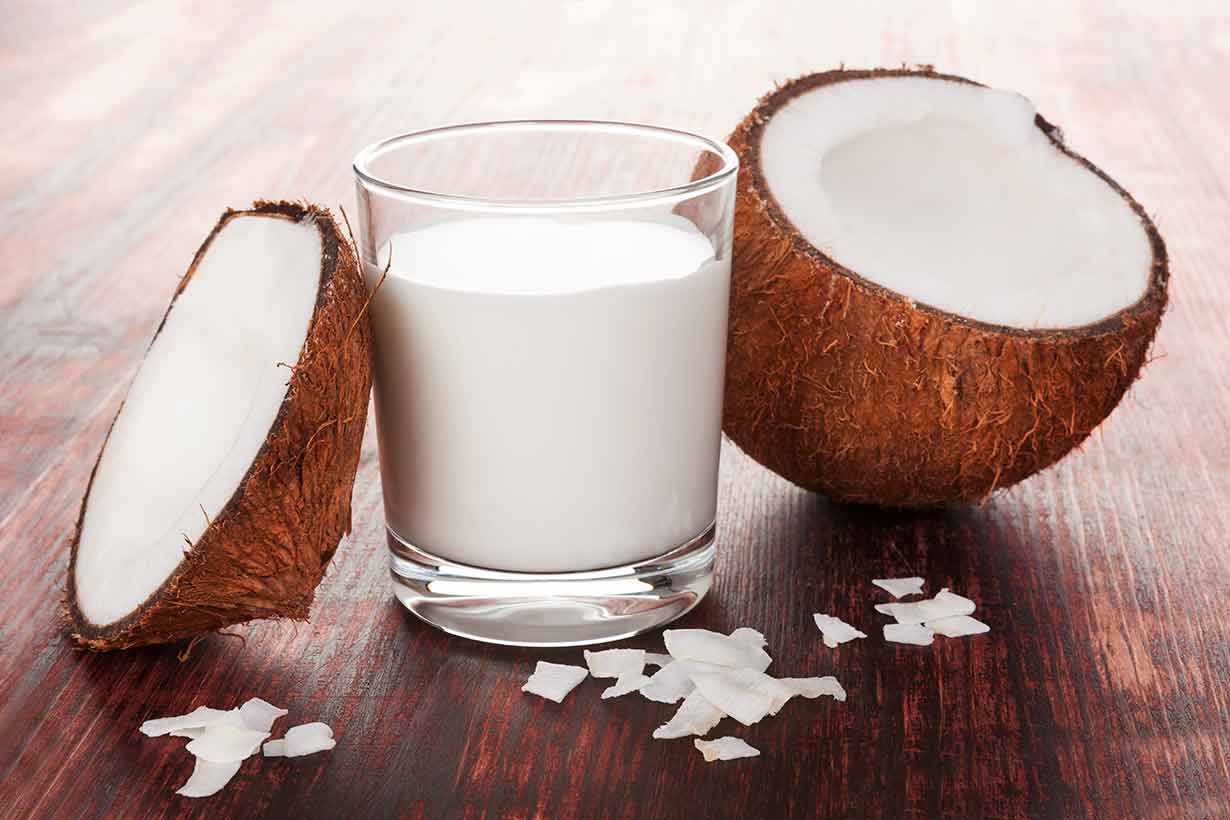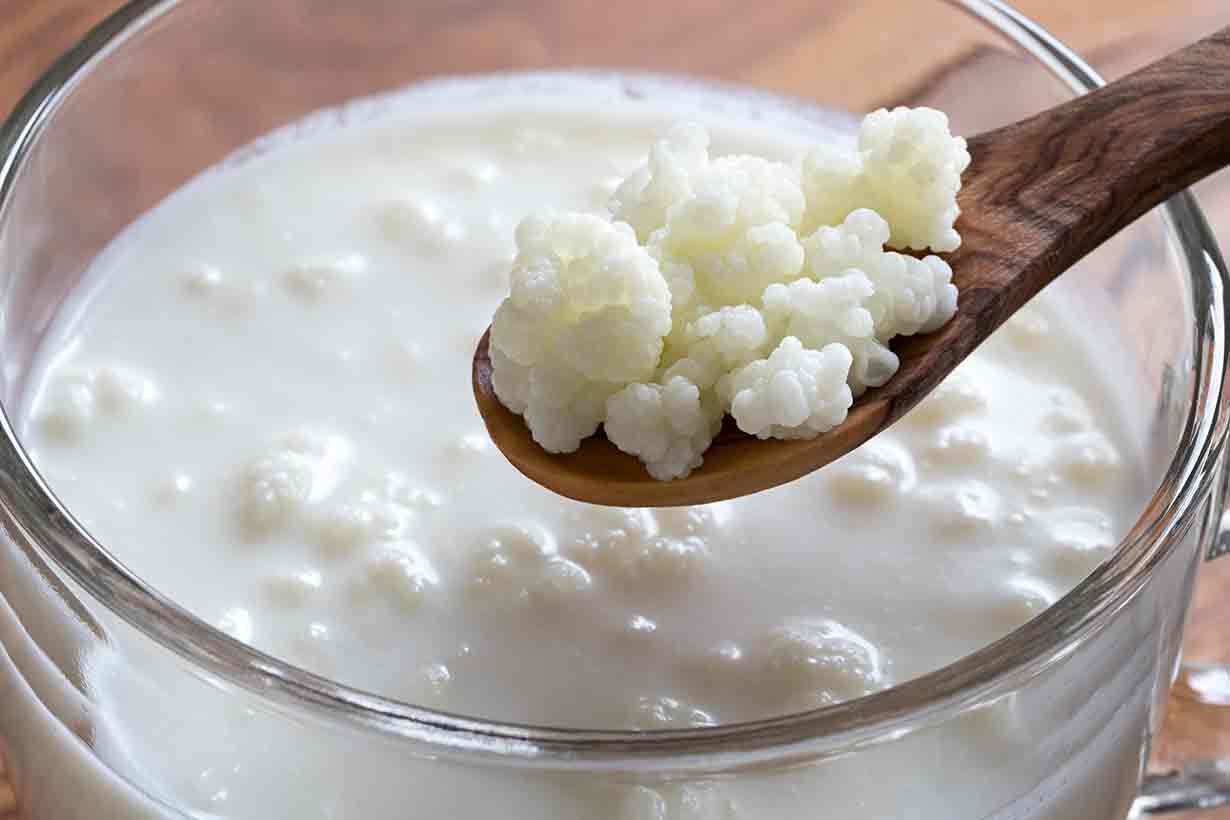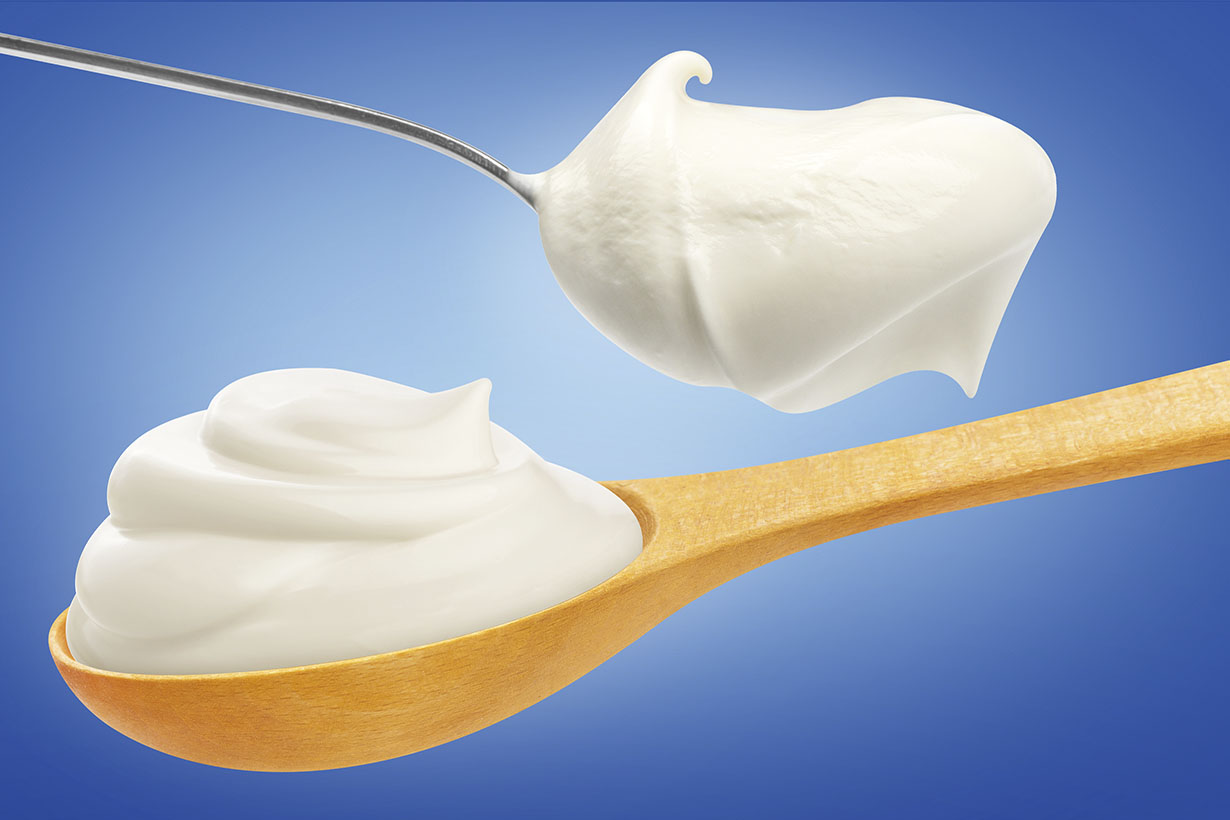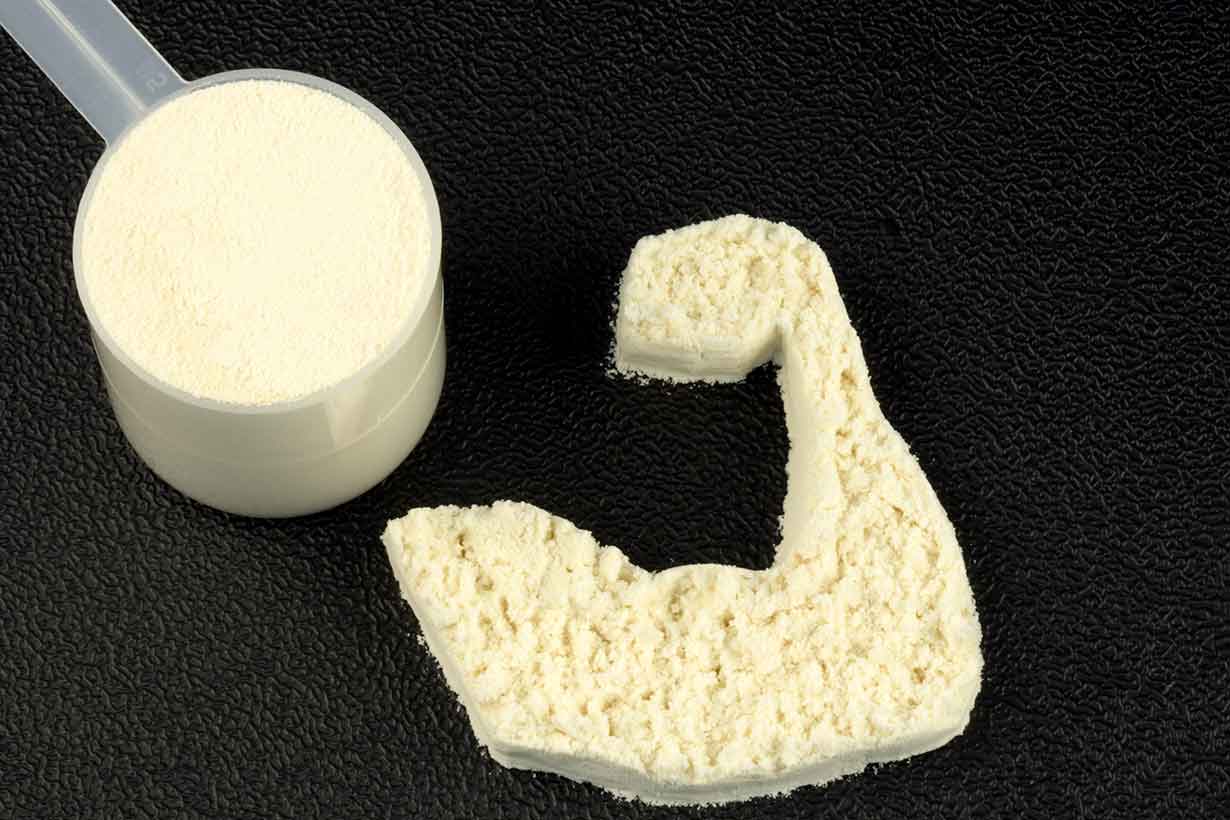Quark is a lesser-known dairy product, but its impressive nutritional profile makes it worth exploring.
While it’s common in Europe, it can be harder to find quark in the United States–though it is available.
In this article, we explain what quark is, examine its complete nutritional profile, explore its potential benefits, and offer some practical ways to use it.
Table of contents
What Is Quark?
Before we examine its nutritional profile, some of you might not be familiar with quark, so here’s a quick overview.
Quark is a thick and creamy fresh cheese with a slightly tangy flavor. This slight tangy taste arises from the process of adding lactic acid bacteria to milk, which causes the milk to acidify and thicken into a dense, paste-like texture (1).
You can see how quark looks in the image below:
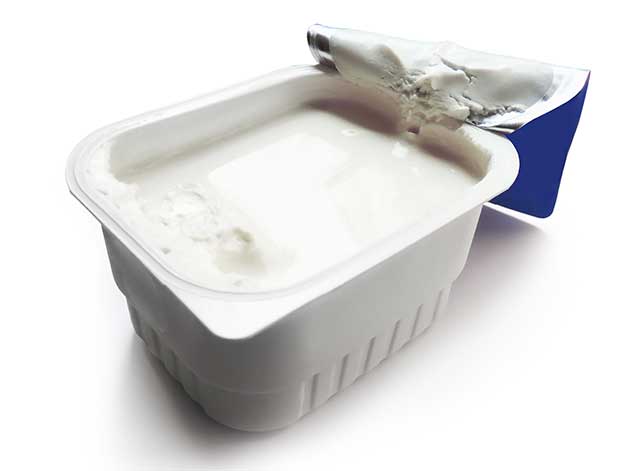
Due to the relatively mild flavor of quark, a wide variety of flavored quark products are available.
Much of the quark on store shelves is made from fat-free milk, which means it contains no fat while providing a significant amount of protein.
Key point: Quark is made by acidifying milk with lactic acid bacteria. It has a very thick texture and a slightly tangy flavor.
What is the Nutritional Profile of Quark?
Now that we know what quark is, what does it offer nutritionally?
Let’s find out. Below is the complete nutritional profile for a 220-gram cup serving of fat-free quark, based on data from the CoFID database (2).
| Nutrient | Amount | % Daily Value |
|---|---|---|
| Calories | 164 kcal | |
| Carbohydrates | 8.8 g | 3.2 g |
| Fiber | 0 g | 0% |
| Sugars | 8.80 g | |
| Fat | 0 g | 0% |
| Saturated | 0 g | |
| Monounsaturated | 0 g | |
| Polyunsaturated | 0 g | |
| Protein | 32.12 g | 64.2% |
| Cholesterol | 2.20 mg | 0.7% |
As we can see, a 220-gram cup serving of quark provides 164 calories, a small amount of carbohydrate, and over 30 grams of protein – a significant protein provision.
Vitamins
| Vitamin | Amount | % Daily Value |
|---|---|---|
| Choline | 6.60 mcg | 1% |
| Folate, DFE | 99 mcg | 25% |
| Thiamin (B1) | 0.09 mg | 8% |
| Riboflavin (B2) | 0.66 mg | 51% |
| Niacin (B3) | 0.44 mg | 3% |
| Pantothenic acid (B5) | 0.97 mg | 19% |
| Vitamin B6 | 0.18 mg | 11% |
| Vitamin B12 | 1.54 mcg | 64% |
| Vitamin A, RAE | 4.40 mcg | 1% |
| Vitamin C | 2.20 mg | 2% |
| Vitamin D | 0 mg | 0% |
| Vitamin E | 0 mg | 0% |
| Vitamin K | 0 mg | 0% |
As highlighted in the table, quark is an excellent source of B vitamins, offering particularly high levels of folate, pantothenic acid, riboflavin, and vitamin B12.
Minerals
| Mineral | Amount | % Daily Value |
|---|---|---|
| Calcium | 264 mg | 20% |
| Copper | 0.13 mg | 14% |
| Iron | 0 mg | 0% |
| Magnesium | 24.20 mg | 6% |
| Manganese | 0 mg | 0% |
| Phosphorus | 440 mg | 35% |
| Potassium | 308 mg | 7% |
| Selenium | 0 mcg | 0% |
| Sodium | 99 mg | 4% |
| Zinc | 1.98 mg | 18% |
Like many dairy products, quark is also an excellent source of calcium and phosphorus. Additionally, it provides moderate amounts of copper, magnesium, potassium, and zinc.
Potential Benefits
In the following section, we’ll explore some of the potential benefits quark can offer, based on its nutritient profile and findings from scientific studies.
1) Rich Source of Protein
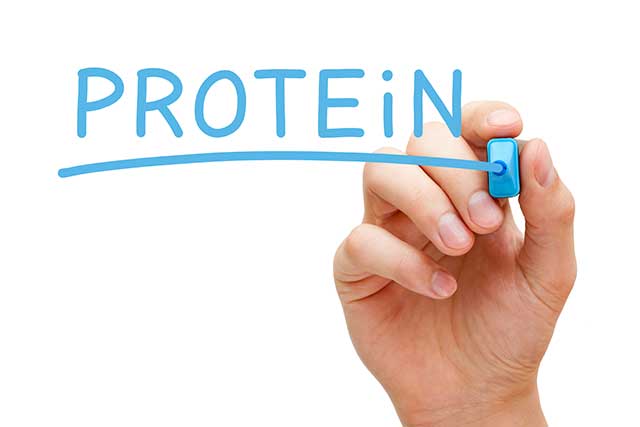
Quark is an excellent choice for anyone looking to increase their protein intake. It is one of the most protein-dense dairy products available.
Compared to other types of cheese, quark is among the most protein-rich options.
The table below shows the relative protein density, expressed as the percentage of calories derived from protein, for quark compared to several other high-protein dairy products: skim milk, Cheddar cheese, and low-fat Greek yogurt (2, 3, 4, 5);
| Food name | Protein per 100g | Calories per 100g | Calories from protein | Protein density % |
|---|---|---|---|---|
| Quark | 14.6 g | 75 kcal | 58 kcal | 77% |
| Cheddar cheese | 23.3 g | 409 kcal | 93 kcal | 23% |
| Skim milk | 3.43 g | 34 kcal | 14 kcal | 41% |
| Low-fat Greek yogurt | 10.2 g | 67 kcal | 41 kcal | 61% |
As the table demonstrates, 77% of the calories in quark come from protein. This percentage easily surpasses the protein density of low-fat Greek yogurt, skim milk, and Cheddar cheese.
In other words, consuming quark allows people to significantly increase their protein intake without adding many extra calories to their diet.
This low energy-density makes quark an excellent protein-rich option for:
- Anyone aiming to lose weight or follow an energy-restricted diet.
- People seeking additional protein without adding excessive calories or gaining weight.
For more on protein-rich dairy foods, see this comprehensive guide to whey protein.
Key point: Quark is an excellent source of protein, offering 14.6 grams per 100 grams for only 75 calories.
2) Low In Lactose
Although quark contains lactose (milk sugar), it has a much lower concentration than many other dairy products do. For example, milk contains around 5 grams of lactose per 100 grams (6), and low-fat yogurt contains provides about 7 grams of lactose per 100 grams (7).
In comparison, quark contains only three to four grams of lactose per 100 grams (2, 8).
Researchers suggest that many individuals with lactose intolerance may tolerate up to around 12 grams of lactose in one go (9, 10). In this context, “tolerate” means being able to consume lactose without experiencing side effects or only experiencing very mild symptoms.
For such individuals, quark could be a better dietary option than milk or yogurt. However, individuals with more severe lactose intolerance should still exercise caution about consuming quark.
As always, it is important for individuals with lactose intolerance to discuss any dietary changes with their healthcare provider.
Key point: Quark may be better tolerated than milk and yogurt by people with lactose intolerance.
3) Quark Significantly Increases Muscle Protein Synthesis In Older Adults
Older adults generally experience lower rates of muscle protein synthesis compared to younger adults (11, 12). This means that their bodies have a less significant response to protein intake when it comes to building and maintaining lean muscle.
However, research has shown that large, timely doses of high-quality protein can enhance muscle protein synthesis rates in older adults. This effect has been demonstrated with protein powder supplements such as whey protein (13, 14, 15).
As a dairy product with a high protein content, quark has also been studied for its potential to promote muscle protein synthesis. A randomized controlled trial published in 2023 examined whether quark could increase muscle protein synthesis rates in older adults (16).
The study evaluated the impact of a 30-gram dose of protein from quark in 14 young male adults (18-35 years) and 15 older male adults (65-85 years). Notably, the results found no significant difference in muscle protein synthesis rates between the older and younger participants. This indicates that quark intake in older adults led to muscle protein synthesis rates comparable to those observed in younger adults.
Key point: Older male adults consuming 30 grams of protein from quark experienced muscle protein synthesis rates similar to those seen in young male adults.
4) May Enhance Satiety and Help Control Appetite
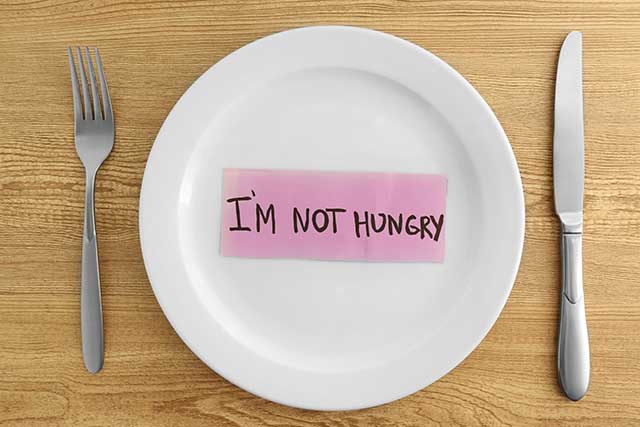
Satiety refers to the feeling of being satisfied after eating without desiring to eat further. On this note, research consistently indicates that protein-rich foods (and diets) can improve satiety levels and may help regulate food intake (17, 18, 19, 20).
Due to its high protein density, quark is a highly filling and satiating food choice.
For individuals aiming to lose weight, quark is an excellent alternative to higher-calorie or flavored sugary yogurts.
Key point: Quark may help to promote satiety and support better appetite control.
5) A Rich Source of Important Nutrients
Despite being relatively low in calories, quark provides a broad range of vitamin and minerals.
Notably, quark is an excellent source of the following nutrients.
- Protein
- Calcium
- B vitamins
- Phosphorus
These nutrients all play a vital role in supporting skeletal health and strengthening bones. Additionally, B vitamins are crucial for energy metabolism and various other functions (21, 22).
Key point: Quark offers a diverse range of beneficial vitamins and minerals, including significant amounts of nutrients vital for bone health.
6) Rich Source of Calcium
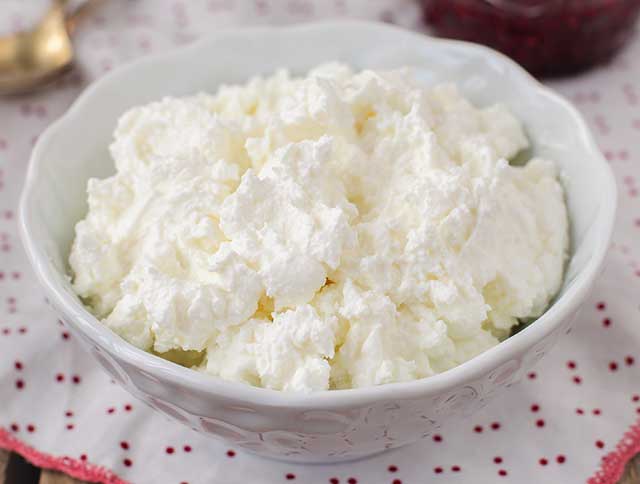
Like other types of cheese, calcium is a standout nutrient in quark with 264 mg of calcium per 220-gram cup serving (2).
The reference daily intake (RDI) for calcium ranges from 1000 mg to 1200 mg, depending on age and gender (23).
Calcium has many essential roles in the human body, and it has the primary function of maintaining healthy bones (24).
Key point: Quark provides a substantial amount of dietary calcium.
7) Potential Anti-Inflammatory and Digestive Benefits
In recent years, a growing body of research has indicated that lacto-fermented dairy products may have digestive benefits (25, 26). The most common bacterial strain used to produce quark is Lactococcus lactis (L. lactis) (27).
In initial trials using cell cultures, this bacteria displayed anti-inflammatory effects on intestinal conditions such as inflammatory bowel disease and colitis (28, 29).
However, these studies provide relatively weak evidence and are cannot confirm the bacteria would have the same effect in humans. Human trials are necessary to validate these findings.
Interestingly,a randomized controlled trial involving 114 human participants found that supplementing with L. lactis alleviated birch allergy symptoms (30).
Key point: The live bacteria cultures in quark may offer potential health benefits, but further human research is necessary.
Simple Ideas For How To Use Quark
So, you have a tub of quark but aren’t quite sure how to use it?
Here are some quick and simple ideas:
- Mix with fruit and nuts: Add a handful of berries and nuts to a bowl of quark for a healthy, nutritious snack.
- Add it to a soup: For a creamy and delicious texture, try stirring some quark into your favorite soup. This is also a good way to increase the protein content.
- Make a dip: Blend quark with chives, garlic, onion, salt, and pepper for a flavorful dip.
- Use it in a curry: Like other kinds of dairy such as butter, ghee, cream, and yogurt, quark work well in curries, providing a creamy texture and extra flavor.
- Make a mousse: Melt some dark chocolate in a pan, whisk in an egg yolk, and then add the quark and a sweetener if desired. Mix well and refrigerate before serving.
- Enjoy it on its own: Quark can be a quick, healthy, and high-protein snack. It tastes great on its own, and it’ makes an easy’s a convenient on-the-go option. There are many flavored options for those who prefer a particular taste.
Key point: Quark is very versatile, and it pairs well with a wide range of foods.
Final Thoughts
Quark is one of the most nutritious dairy foods available, offering an excellent source of protein, vitamins, and minerals.
With its impressive versatility, quark is a convenient and healthy addition to any diet.
For more on cheese, see this guide to some of the most popular types.

